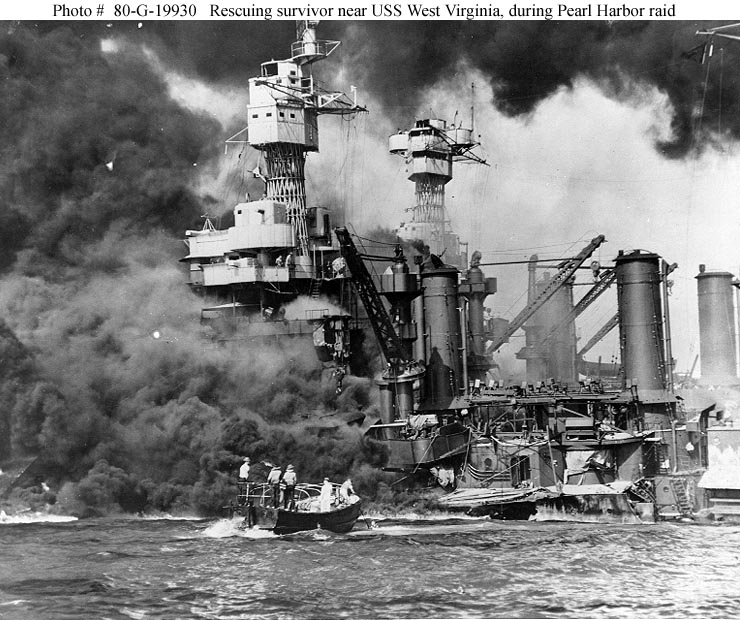
I did not get a chance to post anything on December 7 in honor of Pearl Harbor, but every class I had that day it was a point of discussion. From simple discourse on how something like that (a massive sneak attack) can happen to the reasons for Japanese aggression, the specifics of the attack, and some interesting “What Ifs?” I think a good history teacher makes their class a more enjoyable experience when students are engaged in critical thinking with such teaching devices as “counterfactuals” (What if) and “contingency.” I bring this up as I came across an excellent article by Aaron Astor over at the The Moderate Voice.
One of the fun things about the study of history is the use of counterfactuals. That is, positing an alternative history and wondering how things would have ended up differently. What if the US Navy had never won at Midway? What if the Pacific Fleet really was destroyed at Pearl Harbor? Did FDR really know it was coming – and what would have happened if he had responded differently? And so on.
But counterfactuals are deceptively simple. History does not follow a linear path where one alteration could predictably recalibrate all subsequent events. It’s not like a great Excel financial model where by plugging in a different input you get a predictably different output.
I have found that counterfactuals are better for my basic U.S. History class and contingency better suited for my AP U.S. History students. But as Astor notes, it is the combination of the two that really takes the discussion and critical thinking to a new level.
But counterfactuals without respect for contingency look more like Monday morning quarterbacking. Should Bragg, for example, have been able to rout Rosecrans’s forces once and for all at Chickamauga? Well, sure! But could he have really planned for the accidental gap to appear in Union lines that fateful day in the first place? And what of the serendipitous arrival of Longstreet’s forces – just in time to drive through the Union gap and force a near disastrous retreat back into Chattanooga? As with most cases, a closer examination reveals the futility of pushing this line of reasoning. There were just too many forces that converged at a particular time to make it all happen the way it did.
There is a danger, however, that we reduce history to nothing more than randomness, so where does that leave us? Well, as Astor notes, we can throw up our hands and declare history essentially useless to understanding today or we could “spend more time marveling at the past for its own sake.”
Good stuff and good food for thought as we find our way as teachers of history.
Chris,
I enjoyed the post. I sense a lot of resistance to counterfactuals and suspect it’s because they can get silly quickly – What if R.E. Lee had an atom bomb at Gettysburg? But I think they can be valuable tools. When someone takes the position that a Union victory in the Civil War was inevitable, for example, I start to wonder what would have happened if a Union soldier hadn’t found those three cigars outside Frederick, MD. In fact, I’d go further and maintain that we use counterfactual thinking all the time, even though we don’t express it that way. When we say, for example, that the decision to bombard Ft. Sumter was (or was not) a blunder, we are in effect covertly comparing the results of that decision with the hypothetical results of another decision that wasn’t made. Unless history is reduced to a dry recitation of the facts, counterfactual thinking is embedded in the study of the past.
Great comment and thanks for the post.